I am honored to have been invited by St. James United Methodist Church in Spartanburg, SC to produce an art installation for this Advent season in the congregation’s contemporary worship space. Given a great deal of latitude concerning what and how to do the project, I proposed developing a series of large paintings on the theme of light, which will develop week by week from the first Sunday in Advent (December 1, 2013) until Epiphany (January 5, 2014).
The Project
My goal with the installation is to highlight some of the compelling characteristics of the space. The room evokes both a warm, communitarian usefulness and quiet illumination.
Used for worship on Sunday morning, volunteers then reset the room as a fellowship space for a mid-week congregational meal. Even in worship the atmosphere of the room is intended to be convivial and relaxed; a children’s area includes crayons and several rocking chairs, and the configuration of the main seating is in the round, so that the congregation encircles the communion table and can see one another. For both worship and fellowship, it is an interactive space.
The appearance of the room echos the community orientation of its use. The room has a relatively low ceiling, and the walls are neutral. It conveys humility and the warmth of a place where people can comfortably gather together as equals.
Yet the room was also the church’s original Sanctuary, and its focal point is a stained glass window comprised of a simple cross and rectangular panes of blue, green, red, and yellow glass.
My aspiration is to create images that draw out both the warmth of the community space and the illumination of the worship space: to fuse these dual virtues of warmth and light.
1st Sunday in Advent: Dec. 1
Scripture Readings:
Advent is a season of waiting and expectation. Corresponding to the theme of waking to something new in the scripture readings for the day, the first step in the project installation was to simplify the worship space to its essentials. Images on the walls, greenery, and furniture not specifically required for worship that day were removed. No new images were added. The intent was to encourage the congregation to see the room with fresh eyes, and to build anticipation that new imagery in the space is coming.
I was impressed at how gentle the room felt, despite concrete block walls without ornamentation to soften them. It is a welcoming room.
2nd Sunday in Advent: Dec. 8
Scripture Readings:
The scripture readings for the 2nd Sunday in Advent prophesy a new order of peace. The family of God will expand to include all people and all of creation. The promise of this new world, born from the dry stump of our old one, difficult to imagine in its grandeur and absurd beauty, comes to us in poetry.
For the 2nd Sunday of Advent, I began to present new imagery into the worship space. I utilized simple wall-hangings of raw canvas, meant to echo both the room’s humility and to indicate a sense of incompleteness. Like Advent, the project is underway, but it is not realized yet.
In contrast to the roughness of the materials, the design of the wall hangings was intended to boldly bring the light of the stained glass window richly into the room. Red, yellow, green, and purple vibrantly fill major sections of the walls. A green stripe in the center of each canvas accentuates the verticality of the window and of the wall hangings. The stripes recall not only the light of the window itself, but also a sense of upward movement, of reaching, of prayer. I hope the energy of the hangings’ color brings to mind the power of the poetry in the scripture readings.
3rd Sunday in Advent: Dec. 15
Scripture Readings:
The readings for the 3rd Sunday in Advent are songs of joy, promising a reversal of the usual earthly order: violent power will be overturned by the poor and faithful; life will blossom where it should not thrive; God will be known by these acts. The prophet Isaiah gives heart to those anxious about this upending: “Be strong, do not fear! Here is your God.” (Isaiah 35:4)
To express the radical energy of these passages, exuberant painting emerged on some of the canvas wall-hangings. The painting is composed but little controlled. It breaks the formality of the wall-hangings’ basic composition with free gestures and new color.
But the painting is unfinished, rough and incomplete, and it shows on only a few of the wall-hangings. The promise of something new is made, but it is not here yet.
4th Sunday in Advent: Dec. 22
Scripture Readings:
The paintings for the fourth Sunday in Advent show light breaking into the surface of the pictures, light breaking in but not yet fully seen.
The end of Advent opens into Christmas. Cosmic history nears a time of fulfillment in human life, a new time and new life in the presence of God. Waiting is almost over. The paintings presented this week express the beginning of that new time, light giving itself to our world to create this new life.
The scripture for this Sunday shows what this new time means for how we live. What we thought was right to do, how we thought we should live, may no longer be. The message seems to be, “Love more. Trust more. Be brave.”
The passages speak of those who, striving to do what they believe is right, are led by God to take further risks, to turn what they believe are good acts into even more compassionate, even more courageous extensions of themselves. These are transformations of who they they thought they were and of what they thought they should do. These are transformations of themselves.
Such a turn, from the known good to the unknown good, requires humility. Such humility, because it reveals God as love, is also glory. These raw canvases roughly layered with paint, streaked with gold of coming light, attempt to share the same paradox.
The First Sunday of Christmas: Dec. 29
Scripture Readings:
Christmas celebrates the revelation of God in the form of a human being, Jesus of Nazareth. The scripture for this Sunday speaks of Jesus as a person who, though divine, is also human and unprotected from all that human being experiences. He is born and will die. He has a family under threat. They are refugees in a foreign land. He suffers. And this is the fulfillment of Advent.
Jesus is a light that illuminates the world, not through abstract purity or elevated ideas, but by bringing the presence of God to our lives. This is a light that knows us, that lives with us.
The paintings for St. James this Christmas bring into the worship space the light of Jesus. This light was already there, above all in the people who gather together in the space, and in their kindness. Symbolically, it enters the room through the stained glass window, and these paintings mean to carry the colors and light of the window into the full space. Implicitly, it is there in the humility and communal warmth of the room, and in its function as a place of shared meals and hospitality. These paintings attempt to make that warmth more visually evident.
These Advent paintings now reveal the light of Christmas, a light on wrinkled cloth and fraying canvas and clotted paint, a light broken and clear and warm, like us.
As a Christmas poem by Edward Esch, set beautifully to music by Eric Whitacre, tells:
Light,
warm and heavy
as pure gold,
and the angels sing softly
to the new-born baby.
Epiphany Sunday: Jan. 5
Scripture Readings:
The true light, which enlightens everyone, was coming into the world. (John 1:9)
The final phase of the St. James paintings carries forward the light from Christmas. Epiphany celebrates the unfolding revelation of God through Jesus, recounting how maji from Persia came from great distances to pay homage to the new born, prophesied king. Our encounter with the light of God’s anointed ruler, our understanding of what Jesus means for us, may be revealed over time.
And the Word became flesh and lived among us, and we have seen his glory, the glory as of a father’s only son, full of grace and truth. (John 1:14)
One aspect of this continuing revelation in the worship space at St. James is the discovery of light in new places. At the project’s beginning, long vertical green tabs connected each wall-hanging with the green panels in the stained glass window. Now these tabs, painted in silver and gold, hang on a screen just beside the stained glass window, adding a new dimension to the installation. This area, previously little used in worship and muted with a dark navy backdrop, has come alive as the space for musicians and worship leaders. The newly-installed gold-green tabs echo the new dynamism of the stage.
All things came into being through him, and without him not one thing came into being. What has come into being in him was life, and the life was the light of all people. (John 1:3-4)
The placement of the vertical gold-green tabs on the stage screen means their removal from the wall-hangings in the main part of the room. The paintings have developed over six weeks, with added layers of color each Sunday. Even as the final layer of paint is added this week to evoke the image of light, removing the vertical gold-green tabs strips the heart of each wall-hanging back to its original raw canvas color. At once, the light held by each wall-hanging is a layered accumulation from the duration of the project, and a recollection of its original, untreated warmth and color.
This suggests that we find the light of Christ in our lives in at least two ways: first, by receiving him from outside of ourselves, like the paint layers added each week to build an image of light on the wall-hangings over time; and second, by finding that this light is already within us, original to our being.
This has been the goal of the St. James Advent painting project: to bring forward through the season a light and warmth that were already there. It is my great hope that the work has succeeded in this, in a way that matters to the congregation gathered there, so that their worship and time together in that space is enhanced.
From his fullness we have all received, grace upon grace. (John 1:16)
My profound thanks to the people of St. James United Methodist Church for giving me such freedom to experiment with painting light in their worship space. A stranger could not hope for better hosts. May the work be a friend to you as you continue on the way. Thank you!
No one has ever seen God. It is God the only Son, who is close to the Father’s heart, who has made him known. (John 1:18)
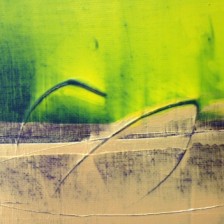
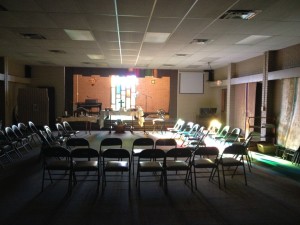

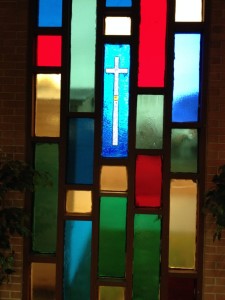
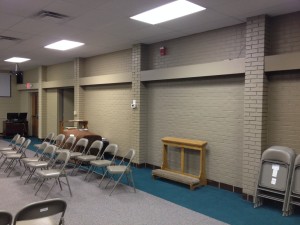
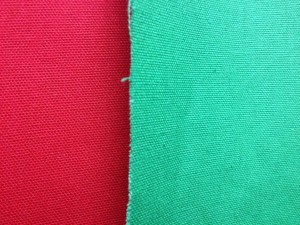
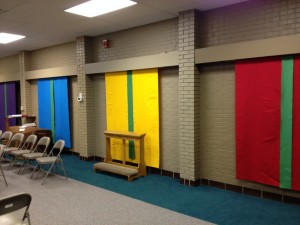
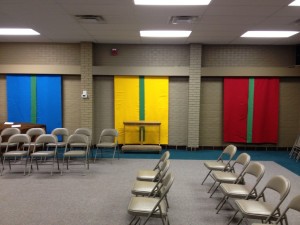
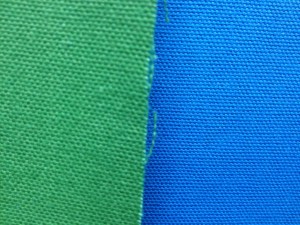
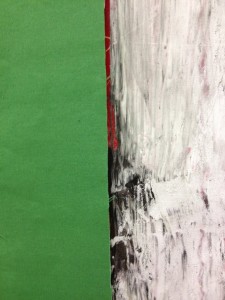
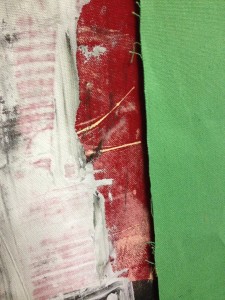
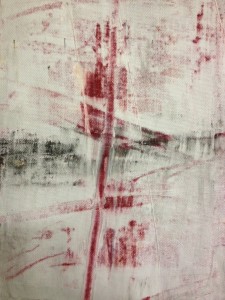
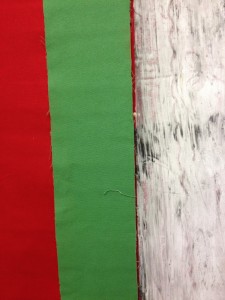

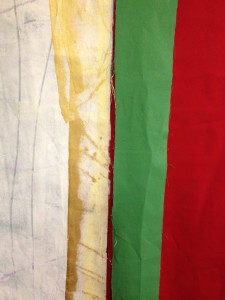
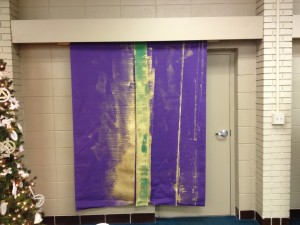
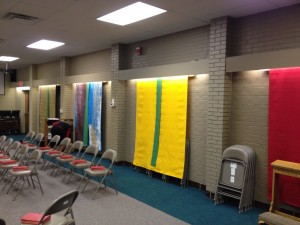
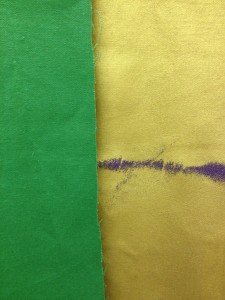
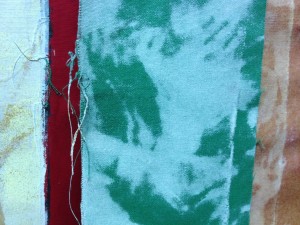
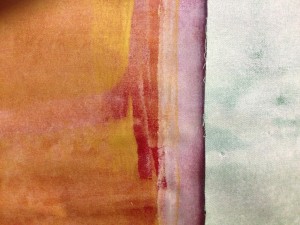
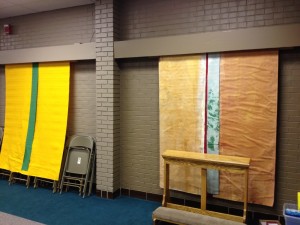
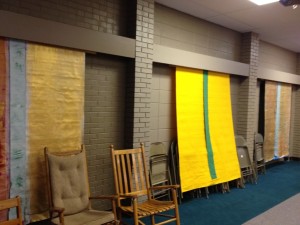
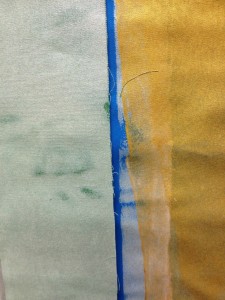
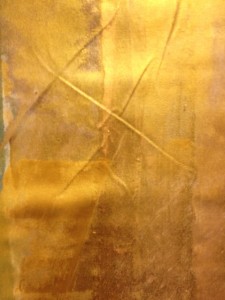
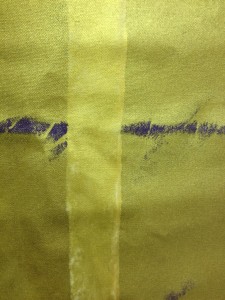
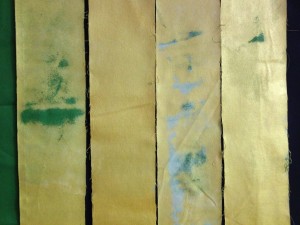

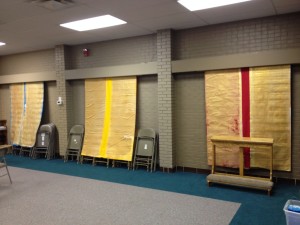
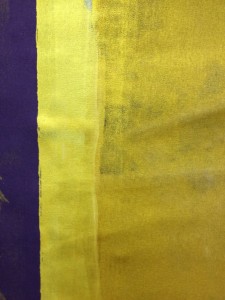
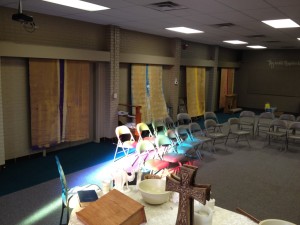
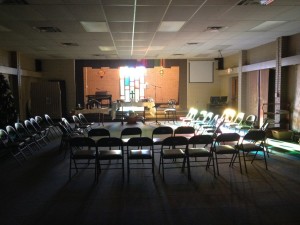
Leave a Reply